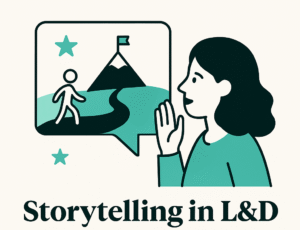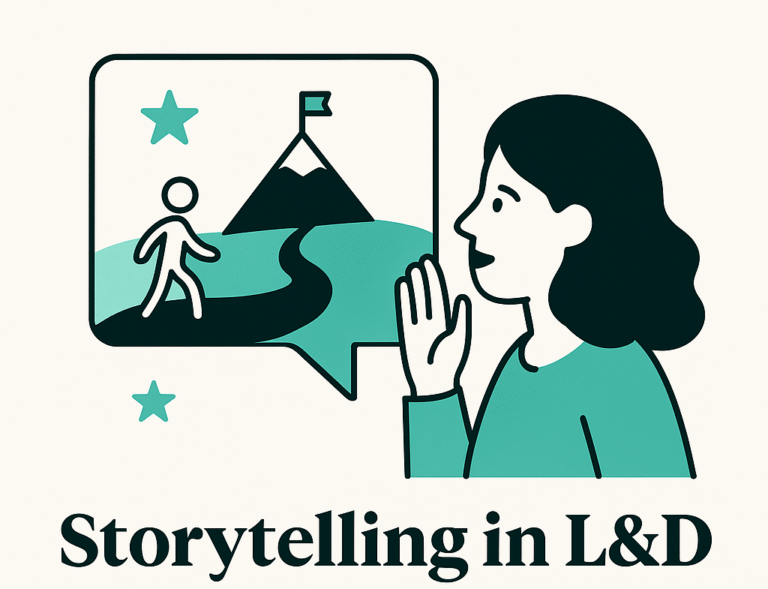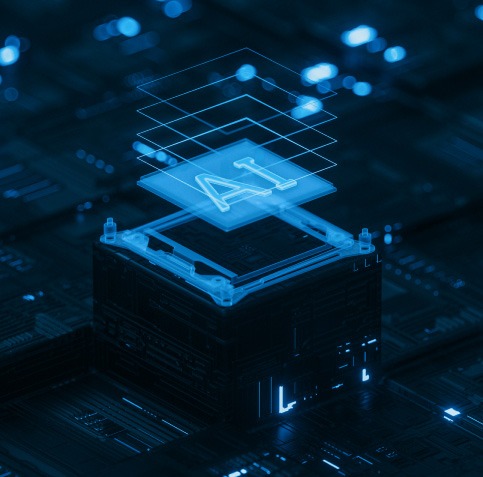According to a ew Capterra survey, almost 50% of organizations are increasing their L&D spend, but they’re still unsure on just how to use these resources to achieve results. In other words, businesses want to know how to channel employee learning into measurable development.
So how do you help your employees learn as efficiently and pragmatically as possible?
No one likes a lecture, especially when they’ve worked long and hard to get the education necessary to work at a company like yours.
So why do so many businesses still treat training as a chance to send their employees back to school?
Simple. They don’t realize there’s a better way.
Luckily, there is!
Action learning is about achieving tangible learning outcomes aligned with real team goals. Rather than treating training as separate from actual work, action learning empowers employees to pair up their training with actual individual and business priorities.
Through pairing your LMS skills development capabilities with real-world training opportunities, you can level up your company’s employee development initiatives and your workforce at the same time.Why treat training as a diversion from work when it’s really a way to dive deeper into personal and professional growth? Learn more about how action learning can improve your company’s training practices at the same time you empower your individual employees.
What is action learning?
Action learning is a path you carve out for your team members to learn by doing. It can take many different forms, depending on your organization’s needs. More often than not, businesses find areas for improvement in their workflows and design real-world action learning projects for teams to address these pain points.
These projects aren’t just simulations either. In order for action learning to live up to its potential, teams need both the responsibility and assurance their work will lead to tangible results. Should their efforts prove a success, their teamwork and growth will double up as a win for your company as a whole too.
What are the steps to action learning?
There are six key steps to action learning, although you’re always free to color outside the lines to meet the unique needs of your own organization. Use these as a template to get started:
- Identify a problem. Look at areas where your business is struggling. Perhaps you’ve noticed certain team members across the organization are having a hard time collaborating. Maybe you’d like to get a wide swath of your company up to speed on a new technology. Identify an area where actionable steps can make tangible improvements in the near term.
- Assemble a team. Bring together a team of four to eight people (as a general guideline). Consider the specific action learning initiative when it comes to picking who’ll make up these teams. In some instances, you may pick representatives from the same departments, whereas other goals will require cross-functional teams. Aim for different experience levels and personality types whenever possible.
- Pick a coach. For action learning to be maximally effective, you’ll need someone to set some guardrails and facilitate the team’s growth. Choose someone who can guide people to solutions without giving the answer away. You’ll want a good listener and a terrific question formulator for this role.
- Question, reflect, and listen. Now that you’ve got your team together, it’s time to get the ball rolling. Before taking action, they’ll need to learn how to best work together. Have your coach empower them to question the problem from multiple vantage points. Prioritize group discussion and brainstorming in a judgment-free environment.
- Take action. After the team has taken on the problem theoretically, it’s time for them to implement their plan in the real world. This is the key differentiator between traditional training and action learning. Not only do your employees learn by doing, their work also creates a tangible impact on your business.
- Commit to learning. Although solving the immediate problem is important, action learning should be the first step in a long process of employee growth and education. The point is for initiatives like these to not feel like training. Workers can take lessons they learn from these experiences and apply them to a wide swath of daily tasks in the future too.

What are the benefits of action learning?
Action learning can make employee education and growth exciting, empowering, and enlightening. It’s a way for team members to receive the coaching they need, while collaborating with each other in an impactful, pragmatic way. It treats skills development and work worth doing as two sides of the same coin, rather than ships passing in the night.
Action learning can help you retain premium talent, drive innovation through creative problem solving, increase coworker camaraderie, equip your employees for leadership roles, and help everyone involved learn how to think on their feet. After all, even the most exhaustive and engaging training can’t solve every problem preliminarily.
Consider the old adage: give someone a fish, they eat for a day—teach someone to fish, they eat for a lifetime. While traditional training equates to the former in many cases, action learning almost always plays the latter role.It allows people to learn by doing in a controlled, yet directly productive, environment. Not to mention, it creates a built-in reward system for both managers and their employees. Everyone stands to gain from the process because it focuses on generating results for the business at the same time it empowers individual growth.
How can an LMS help facilitate action learning?
While you can do action learning without a powerful and exhaustive LMS, you’ll be at a disadvantage in comparison to companies who do use one. These tools help automate and expedite these processes, bringing teams together to collaborate at the best of their ability.
For instance, Totara Learn, Engage, and Perform can all help make the action learning process as seamless and intuitive as possible.
![]()
Totara Learn will provide your employees with expansive streams of educational content to meet and exceed individual development goals. Your company will have a customizable platform capable of meeting their every need as they ideate and execute on the initiatives you assign them. Action learning ideally works in conjunction with your formal learning program. Skills development starts in the LMS with targeted course training and action learning picks up the thread with real-work applications and coaching.
![]()
With Totara Engage, you’ll be able to connect these teams with each other, as well as with their coaches. It’s a place where collaboration can flourish, especially in today’s hybrid and digitized work environments. This platform also helps you track their engagement in action learning, as well as in other initiatives.
![]()
Totara Perform allows you to assess action learning on both ends of the process. Up front, it can help you see where employees can improve. This allows you to bring together teams who might benefit from joint action learning initiatives on related issues. On the back end, it gives you an incisive look into how well the learning process boosted their abilities.Employees are able to track their progress every step of the way, and so can you! It’s a measurable, manageable process both employers and their team members can use to chart their impact on business outcomes.
How do I bring action learning beyond my LMS?
Think of your LMS as the necessary building blocks to get the action learning process started. It can provide the foundation for your teams and coaches, but the process still needs to go offline to achieve its full potential.
Whether your team is in-office full-time, hybrid, or uses remote work technology like Zoom or Microsoft Teams from different corners of the globe, collaboration is necessary to make the most of this process.
Your LMS is the jumping-off point for these discussions, but face-to-face teamwork will be what puts the process over the top. Luckily, there are plenty of ways to connect learning and performance outside your talent development technology.
How do I assemble an action learning team?
To assemble the right action learning team, you need to take a look at the specific objective you’re hoping to meet.
Do you have a distinct project in mind? For instance, suppose you know you want to test out a new marketing strategy for an upcoming product, but you’re not sure just what that strategy should be. You could bring together representatives from your creative, marketing, product, and business development teams to create a well-rounded consortium of people. Each will have unique skills, points of view, and expertise to bring to the table in crafting a solution.
On the other hand, maybe you have a more general goal in mind. Perhaps you’ve noticed a specific team in your organization has reported less than ideal job satisfaction ratings in their most recent performance review. In that case, an action learning initiative may rejuvenate their interest in work and remind them you care about their career development and upward mobility.
No matter what the specific circumstances, building a team requires finesse, emotional intelligence, and quantifiable metrics about each team member.
Totara’s LMS offerings can help you with the latter a great deal. Through analyzing data about each person in your organization, you can bring together just the right combinations of team members and coaches to achieve maximum synergy. Not to mention, you can also use the same platforms to facilitate much of the collaboration and coaching as well.
How can action learning improve career mobility?
Action learning supercharges career mobility. While this process helps your business solve immediate problems, it has compounding returns for all your employees who participate in it.Why? Because action learning lies at the intersection of hard skills and soft skills.
In the former sense, it gives employees an ability to cut their teeth on new technical or performance-oriented problems in a hands-on way. Rather than telling them how you would like them to solve a problem for your company, you empower them to do so themselves. In doing so, you build up their own confidence in their own abilities. At the same time, you help pave the way for them to move up and take on new roles in your company.
When it comes to soft skills, the effect of action learning is just as quantifiable immeasurable. Employees learn how to work together, communicate effectively, translate theoretical concepts into pragmatic action, and create solutions in real time—and they’ll have a documented record of just where they’ve improved on each front in the Totara Talent Experience Platform. It goes without saying that demonstrable improvements in skills like these will better anyone’s chances in the job market, while making them more effective in their current roles as well.
Interested in leveling up your own team with these sorts of exciting action learning initiatives? See how you can support this pragmatic process with Totara’s suite of products by signing up for a Community account!






